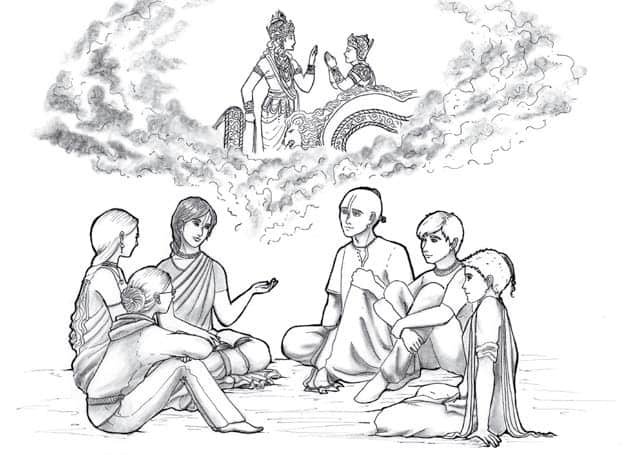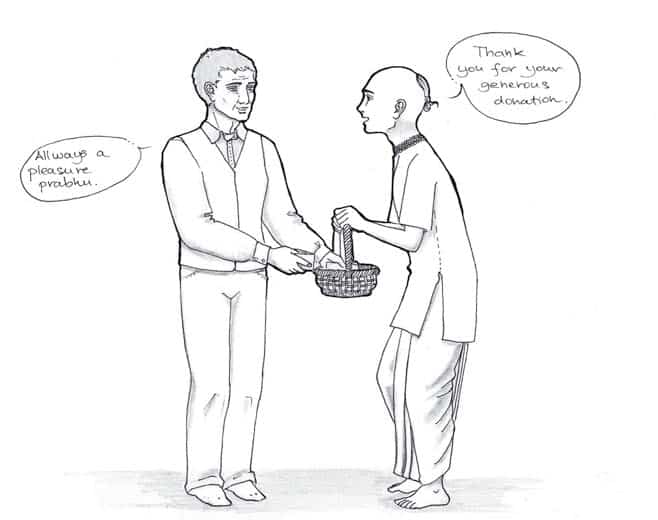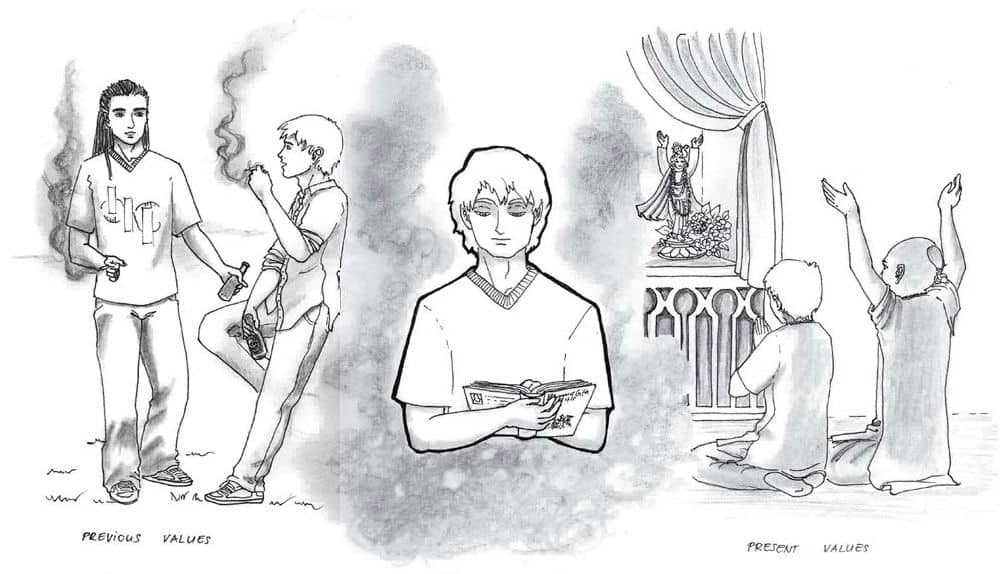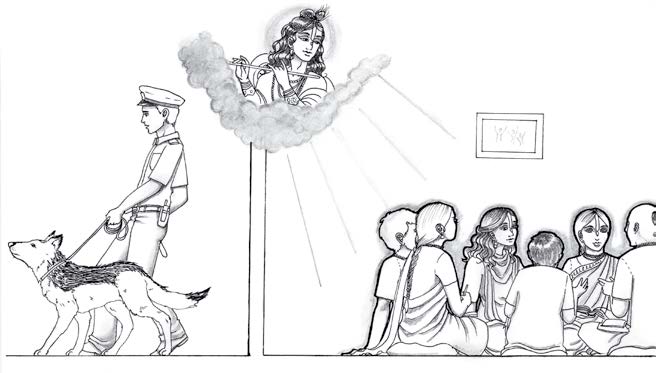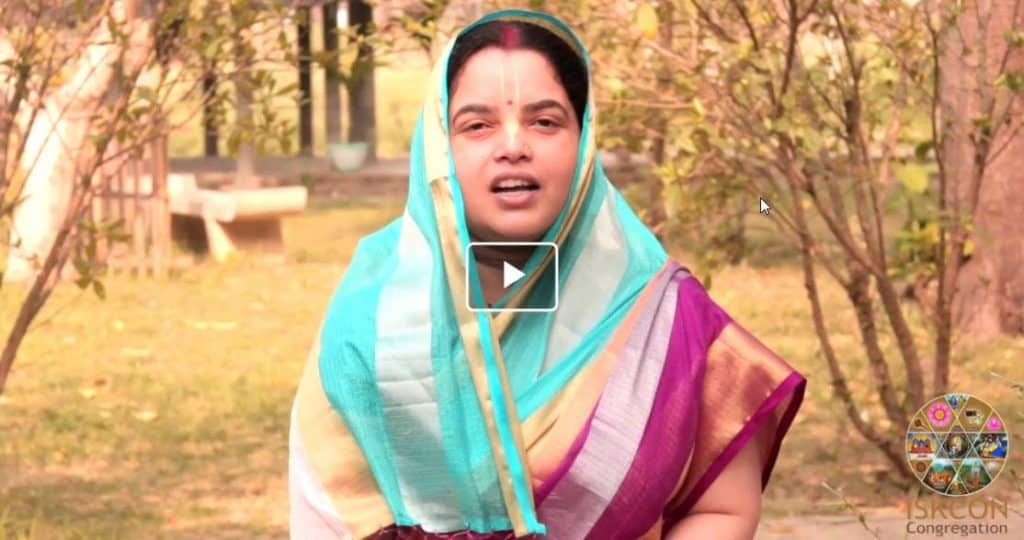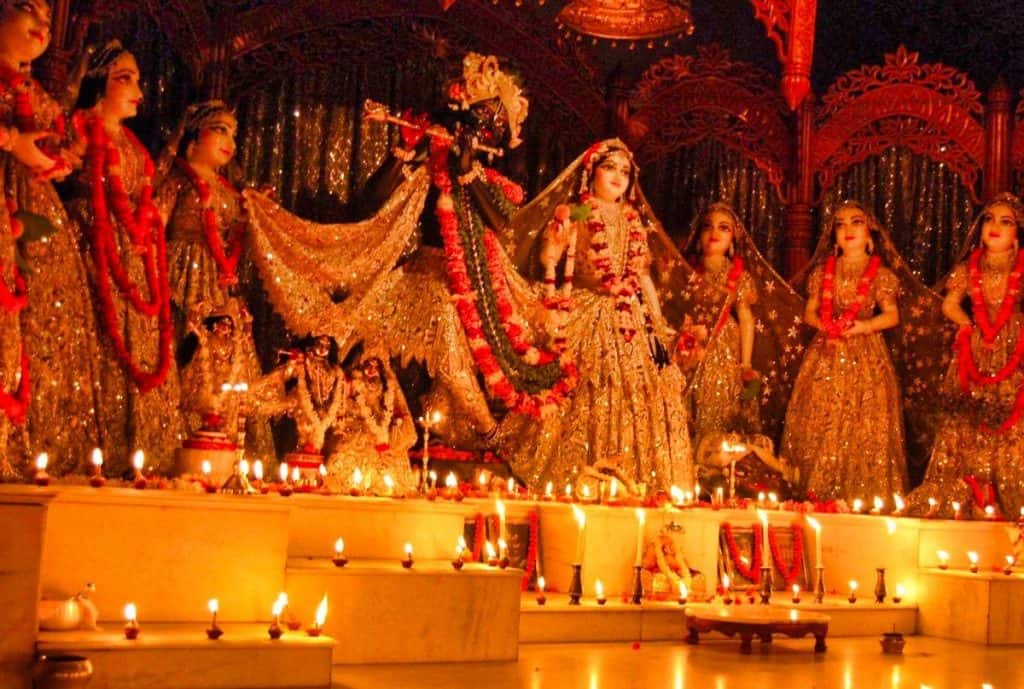This is an extract from the Bhakti Vriksha Manual – chapter three.
Why should you start a Bhakti-vriksha Program? Here we explore some of the benefits.
Efficient in Devotee Care and Training
“Immediately, a person cannot be renounced; therefore gradually, step by step. So unless there is proper training… Now, just like we are selling millions copies of these books; they are reading, and how many of them coming forward? So it requires training. Training is essential to make them Krsna conscious.”
(Darshana, Bombay, 14 August 1976)
In our ISKCON temples, we do not have enough manpower to take care of the systematic training of each devotee of the congregation. Therefore, the more advanced congregational members can be delegated some aspect of training. Srila Prabhupada recommended this approach to education:
“That is the way of Indian teaching—that there is one teacher, and how he’s managing hundreds? That means there are groups. One who is elderly student, he’s taking some beginners: ‘Write a or A like this.’ That he can teach. What he has learned he can teach. Similarly, next group, next group. So in this way, one teacher can manage hundreds of students of different categories. This is organization.
(Conversation, Paris, 31 July 1976)
The Bhakti-vriksha Program focuses on training. New members go through home-study courses and seminars that cover the basics of the philosophy and practice of Krsna consciousness. And there is special emphasis on learning to preach by going out to visit people with more expert devotees.
Promotes Sat-sanga
All the scriptures stress the need to associate with saintly people. In his purport to Bhagavad-gita 7.30, Srila Prabhupada has written:
“The beginning of Krsna consciousness is association of persons who are Krsna conscious. Such association is spiritual and puts one directly in touch with the Supreme Lord, and, by His grace, one can understand Krsna to be the Supreme Personality of Godhead.”
One may think, “Well, that really only applies to associating with pure devotees.”
In at least one lecture, Srila Prabhupada defined sat-sanga:
“Sat-sanga means association with good persons, who are engaged, if not cent percent, at least engaged a certain portion of his life for spiritual realization.”
(New York, 28 March 1966)
We should not think that only very advanced devotees can provide association and spiritual guidance. Every devotee (whether living in a temple or not) can and should help others to make advancement.
“One may remain a householder, a medical practitioner, an engineer or whatever. It does not matter. One only has to follow the instruction of Sri Caitanya Mahaprabhu, chant the Hare Krsna maha-mantra and instruct relatives and friends in the teachings of Bhagavad-gita and Srimad-Bhagavatam.”
(Caitanya-caritämåta, Madhya 7.130, purport)
The Bhakti-vriksha Program is an ideal formula to systematically provide good ongoing association.
Focuses upon the Individual
Newcomers generally need a lot of encouragement and support to come to the point of being a dedicated servant of Krsna. The Bhakti-vriksha groups are ideal for providing individual attention to new people (as well as old). Is caring for the spiritual life of each individual of the congregation the responsibility of only a few busy temple devotees? Someone who visits an ISKCON temple might sometimes simply become lost in the crowd, without receiving the personal care that he needs; the temple residents may not have time to speak with temple guests or to engage them, what to speak of more distant contacts. In the Bhakti-vriksha Program, the focus is on the individual—which is one reason why the groups are kept small, so that each member can receive the personal attention he needs. Every new member is given a personal guide for association and encouragement, and the servant-leader monitors the progress of each member, helping in case of difficulty.
Many religious (and also irreligious) organizations successfully proselytize by giving maximum care and attention to those who show even a slight interest in their message.
Economical
To establish and maintain a temple requires much money. If we divide the temple budget by the number of people who seriously practice Krsna consciousness in that area—say, whoever chants sixteen rounds—we will see that to bring someone to Krsna consciousness is quite costly. Devotees spend so much money just to make one fixed-up devotee (in the temple or in the congregation). Sometimes we face the paradoxical situation whereby—although the city temple has been established to take care of interested people—the resident devotees are always busy simply in collecting money to keep the temple running, so when a visitor wishes to put forward some questions, there is no one available to spend time with the guest. It is a situation similar to a hospital wherein the doctors and nurses are out all day collecting funds for maintaining the hospital facilities, and thus whenever a patient comes, there is no one to take care of him!
“So far your purchasing that building is concerned, if it is a great endeavor, how can you manage?… We are not very much for owning buildings, our real business is to preach and propagate Krsna consciousness widely.… But if we spend our whole time simply to earn money to pay for big, big buildings and decorations, what is the value? I am more interested in preachers than builders and decorators.”
(Letter to Dämodara, 6 August 1972)
To start and operate a Bhakti-vriksha group costs nothing. The group members are already maintaining themselves and do not cost the temple anything. The groups are self-sufficient and operate on a low budget; the only overhead is the supervision, for maintaining full-time Bhakti-vriksha preachers (one out of every 250–500 congregational devotees). The Bhakti-vriksha Program produces enormous results from small investments.
More financial considerations will be discussed in a later chapter.
Upward Mobility
In our ISKCON temples, the positions of responsibility are generally already taken, and thus it is often difficult for qualified and resourceful congregational devotees to express their full potential. The Bhakti-vriksha Program thus provides many opportunities for such devotees to expand their service, for as groups multiply, more and more leaders are needed at every level of the structure—group, sector, circle, etc. A congregational devotee who successfully manages many groups can qualify for higher positions of responsibilities in ISKCON.
Srila Prabhupada wanted that qualified local congregational devotees be trained to take up positions of responsibility. The letter below refers to Vasudeva Prabhu, from Fiji, a congregational-devotee businessman of Gujarati ancestry, who had been initiated that same year:
“Let Vasudeva become president.… Let one brother be president and one treasurer, and give one good man who can act as secretary. I have not lost confidence in Vasudeva. Now the matter is clear; I’m very much pleased with him so let him remain president and that will please him more, and his brother, treasurer, with one secretary.…
“Local men must understand our philosophy, then it will be very successful. We cannot import men from outside. We sincerely want that local men, either from Vasudeva’s family or any family which will take on the work. We have to work on that line.…
“I have no objection if Vasudeva’s whole family is trained up to take charge of the temple. Local men should not simply become a visitor but they should be trained up to take charge of the temple. That is what I want.”
(Letter, 3 November 1976)
A few months later, in May 1977, Srila Prabhupada personally appointed Vasudeva as GBC for Fiji.
Not Limited by the Size of the Building
Only a limited number of people can be accommodated in a temple, whether to reside therein or even just to congregate there. A temple in a city of one million may have space for, say, one thousand people. So what about the rest of the people? Bhakti-vriksha groups meet in private homes, and upon growing to fifteen members they divide. Thus the congregation expands without being restricted by the size of a building. When required, larger halls or stadiums can be rented for larger celebrations. And eventually more temples within that same city will be built and maintained by the combined efforts of the local groups.
Versatile
Bhakti-vriksha groups can be geared to cater to people with different natures and interests—teenagers, housewives, children, professionals, people of different ethnic backgrounds and languages, and so on—who may find it difficult to become involved in the existing temple programs. The Bhakti-vriksha Program offers unlimited opportunities of engagement for different classes of people.
“We want to show the world that Krsna’s service is not stereotyped, one-sided. Krsna can be served from any position, provided one is willing to serve Him. Krsna can be served and approached by businessmen, by lawyers, by scientists, by artists, by musicians, by philosophers, even by thieves and rogues; everyone.”
(Letter to Gargamuni, 11 November 1969)
People of similar tendencies attract each other, as Srila Prabhupada has explained:
“‘Birds of a feather flock together.’ In this world, everyone is attracted by a person of the same category.”
(Bhagavatam 4.22.3, purport)
Generally the groups grow by bringing in people of a similar age, interest, mother tongue or social status—which is natural. Srila Prabhupada wrote:
“I have just received one letter from the black devotees in Cleveland who wish to start their own ISKCON center independently of the white devotees there. In principle, it is all right, birds of a feather will flock together. We should not discourage them in any way from opening their own center, but I want you to go there and see how their things are going on and that the standard of Krsna consciousness is being maintained on the highest level.”
(Letter to Satsvarüpa, 24 August 1972)
Another aspect of versatility is that group meetings and activities can be scheduled at the most convenient timings and places for all the members to participate.
Removes the “Us and Them” Feeling
Srila Prabhupada wrote:
“Actually there is no difference between devotees living inside the temple and devotees living outside the temple.”
(Letter to Susan Beckman, 20 September 1972)
Prejudices (if any) toward congregational devotees quickly evaporate in the Bhakti- vriksha Program, because it becomes obvious that the members of the groups are seriously engaged in practicing and preaching. If the temple residents do not discriminate against the congregation, and see them as devotees and preachers, a beautiful cooperation ensues.
Terms such as “part-time devotees” or “friends of Krsna” quickly disappear from the vocabulary. Being a “devotee” is a state of consciousness, not an occupation done part- or full-time. A devotee who lives outside the temple is not therefore automatically downgraded to being just a “friend of Krsna.”
Avoids Culture Shock
In non-Hindu areas, sometimes new temple visitors feel uneasy and out of place in the totally alien atmosphere. New people may feel more comfortable, or less intimidated, by going to a Bhakti-vriksha group meeting or by visiting or being visited by a congregational devotee. Many who would not go to a Hare Krsna temple can easily agree to visit the home of another “normal” person for a get-together with other “normal” people.
Generates a Sense of Belonging
The essence of community is the sense of the individuals’ belonging to that community. There are primary and secondary affiliations. Secondary are groupings that are formal, utilitarian, and impersonal, such as school classes, business firms, labor unions, etc. Primary affiliations are smaller, more personal, more intimate and informal, such as one’s family. Primary affiliations are usually more important to a person than his secondary associations. Primary affiliations are where people’s values are shaped. The Bhakti-vriksha group is a primary affiliation. The powerful camaraderie among the members of a group cannot develop when people gather only in big assemblies.
Fosters Good Relations
Have you ever heard of an ISKCON temple with financial problems, a temple that tries as hard as possible to get donations? Sometimes the congregation feels burdened by insistent collection schemes. But when a temple organizes and guides Bhakti-vriksha groups, the congregation appreciates that the temple cares for their spiritual life, and not just for their money. The congregational devotees then no longer feel as if their only dharma is to give financial support. This generates a feeling of gratitude and an atmosphere of cooperation that benefits everyone.
Effective in Engaging People
How would it be possible for the manager(s) of a temple to coordinate, directly from the temple, the individual service of hundreds and thousands of congregational devotees? How many people can a mere few temple devotees engage effectively? To organize the congregation into Bhakti-vriksha groups is the best way to effectively engage everyone in practicing and preaching devotional service. The Bhakti-vriksha Program allows ISKCON authorities to supervise thousands of active groups through the various levels of the structure.
Furthers Outreach
Bhakti-vriksha groups allows a deeper outreach into the structures of society. They operate on the cutting edge of the world, in touch with all ethnic, social, and economic communities. Group members live and work in all spheres of society. Preachers from the groups can reach people in a more informal way and cultivate them effectively. Often they have access to important people who could not easily be reached by temple devotees.
Changes Values
The small group setting promotes changes in personal values. Regular contact with devotees inspires one to change personal standards and to accept the principles of Krsna consciousness. Srila Prabhupada has written:
“By association with devotees, dirty things within the heart of a materialistic man are gradually washed away by the grace of the Supreme Personality of Godhead. As silver becomes shiny by being polished, the heart of a materialistic person is cleansed of lusty desires by the good association of devotees.”
(Bhägavatam 4.22.20, purport)
In a lecture in a temple, people may hear that one should do this and that, but many may think, “Well, that is nice, but it does not really apply to me.” Dealing with people personally, in a small group or one to one, has a much bigger impact for shaping their lives.
“In the beginning of life nobody smokes or nobody becomes intoxicated. It is learned by bad association. Similarly, it can be given up by good association.”
(Lecture, 11 February 1975)
Two new group members may be conversing: “I am smoking twenty cigarettes a day,” says one, “How can I be a devotee?” The other replies, “I used to smoke forty. I still smoke five, but I am chanting four rounds and trying to give it up. It is a gradual process, we should keep trying.”
There was one lady who had been chanting a number of rounds for two years but never decided to become a vegetarian. Then, in a Bhakti-vriksha group meeting, she heard that eating meat can cause one to take birth as a meat-eating animal—like a tiger or a cat—and so she finally gave up eating meat.
There are three areas of learning: knowledge (what and why), skills (how to do things), and values (what is good or bad, right or wrong). One acquires knowledge from a teacher in a formal classroom, or by studying some textbook; such learning situations basically augment only the rational aspects of the mind. One learns new skills primarily through application, repetition, and practice; these methods can teach how to effectively perform an action. One forms values through personal contact and intimate relationships. When a child is asked what he would like to be when he grows up, he may say that he wants to be a doctor. Why? How did he come to this conclusion? He was not formally instructed or drilled into it. Someone must have influenced him, and he absorbed that value through his family, witnessing how the family doctor is esteemed and respected, given special attention when he visits, and so on. Values are more caught than taught, as they are transmitted by association. The Bhakti-vriksha group is the ideal place for achieving that change of heart.
Highly Accessible
For many people, to go to the nearest ISKCON temple requires a long trip (if there is a temple in their area). But Bhakti-vriksha groups can be started everywhere, and in that way it is possible to cover a wide area. Krsna conscious association then gradually becomes available “next door.” Housewives with children, poor people, those who have no car—such persons can attend the weekly meeting in their neighborhood, once the groups have spread to every area of that city.
Srila Prabhupada wrote:
“We want every house to be a temple, not that our place should be the only place for the people to come.”
(Letter to Bhavananda, 14 April 1972)
Stability of Members
Temples at present tend to be inhabited by devotees moving a lot—brahmacaris and sannyasis—or by relatively young grihastha couples. Householders who belong to Bhakti-vriksha groups are generally established in their social, familial, and economic situations and can offer a solid and reliable reference point for newcomers—they are “there.” Often it happens that devotees who reside in the temple are either constantly traveling, or now getting married (and thus going through all the related traumas), or transferring to another temple (never to be seen again), or just giving up their preaching due to being overburdened by financial needs or other obstacles.
Generates More Temple Devotees
In the Bhakti-vriksha Program, the entire congregation is systematically exposed to preaching and to taking responsibilities in devotional service. Some develop a strong taste and then wish to become full-time preachers. Many will decide to teach Krsna consciousness for the rest of their lives, and the expanded congregation will give them a chance to do that without having to worry about their maintenance. At this point in time, the brahmacaris and brahmacarinis living in ISKCON temples often have to move out of the temple as soon as they get married. Often, intelligent young people consider joining the temple, but hesitate, as they cannot see much of a future—a few years of book distribution, then what will they do for the rest of their life?
As the congregation expands, the preachers will be able to engage full time as brahmanas and still maintain their family. Vaisnavas who are engaged in other occupations live at home and maintain the temple so that the brahmanas are free to serve the greater community by providing spiritual support, association, and training. Still, every devotee should preach, for that is the order of Lord Caitanya.
When the temple serves a large, spiritually developed congregation, temple authorities will be careful about who is representing ISKCON as a spiritual guide: only the most qualified will be allowed to join the temple to become full-time preachers.
Offers Engagement to Former Temple Residents
When temple devotees decide to live outside of the ashram, they can consider joining a Bhakti-vriksha group and remaining active in their devotional practices and preaching, thus taking a leading role in the congregation. This is something missing in ISKCON at present. Often, temple devotees somehow consider themselves an elite or leading class; when they leave the temple, they feel that they are too good to simply join the congregation, and thus remain in a kind of “leaders’ maya.”
Exponentially Self-Perpetuating
The Bhakti-vriksha Program does not increase by addition, but by multiplication. It does not go from 2 groups to 3, from 3 to 4, from 4 to 5, then to 6, and so on. Rather, it goes from 2 to 4 groups, from 4 to 8, from 8 to 16, and so on. Healthy Bhakti-vriksha groups expand in this way. In a group of, say, eight devotees, if every member brings in a new person every six months, the group can multiply twice in a year.
Resists Persecution
ISKCON’s position is very vulnerable in places where the government is unfriendly and our preaching is based only on our temple activities; it is all too easy for the government to persecute devotees and stop their activities. But the Bhakti-vriksha Program is exceptionally difficult to destroy, and can survive the fiercest persecution. Bhakti-vriksha groups can operate in places where official temple activity is prohibited. Bhakti-vriksha preaching continually goes on in communist and Muslim countries, where it is forbidden to openly preach Krsna consciousness. The Bhakti-vriksha groups are comprised of normal citizens who meet in private homes. Using this approach, even in hostile environments, a handful of devotees can create an underground Vaisnava movement.
